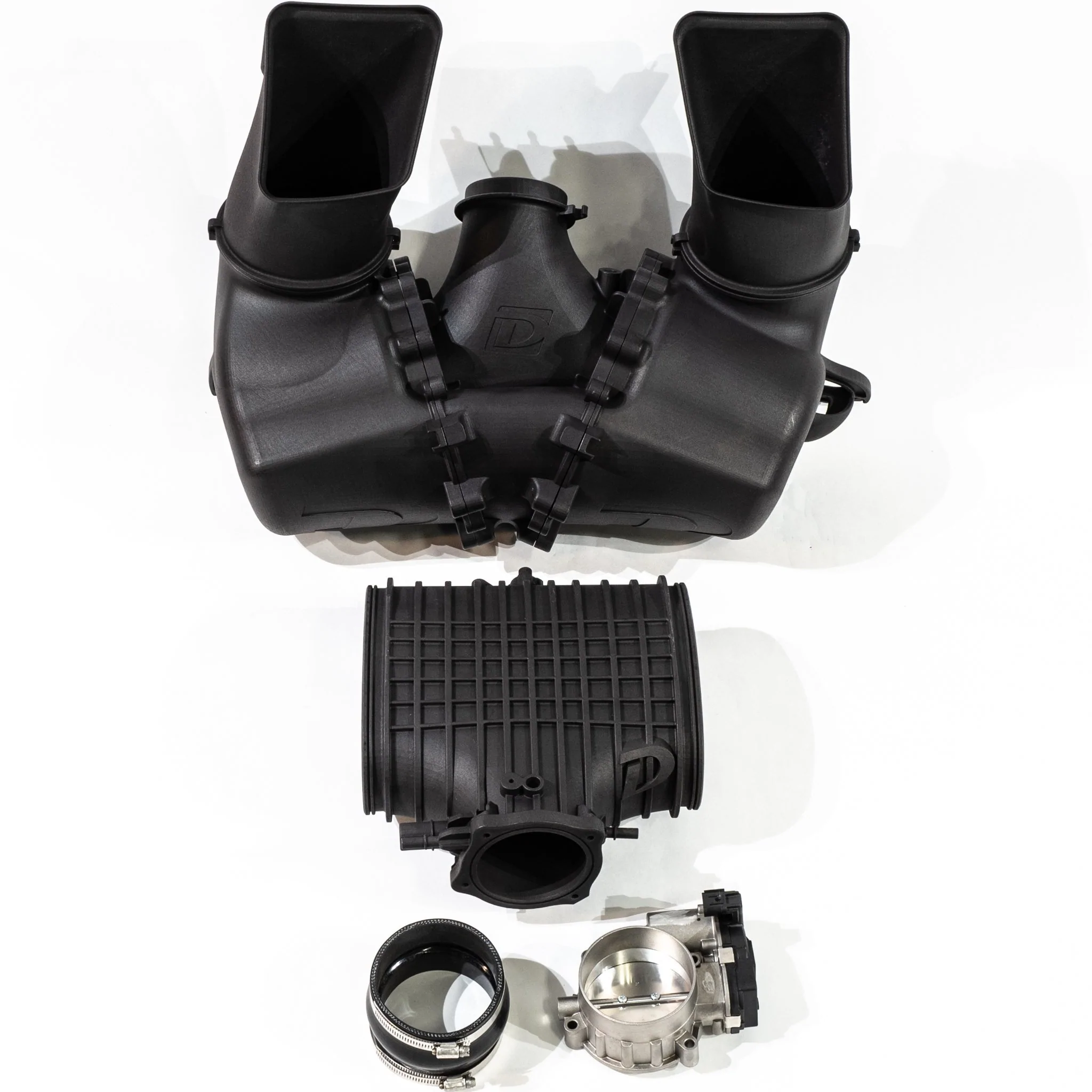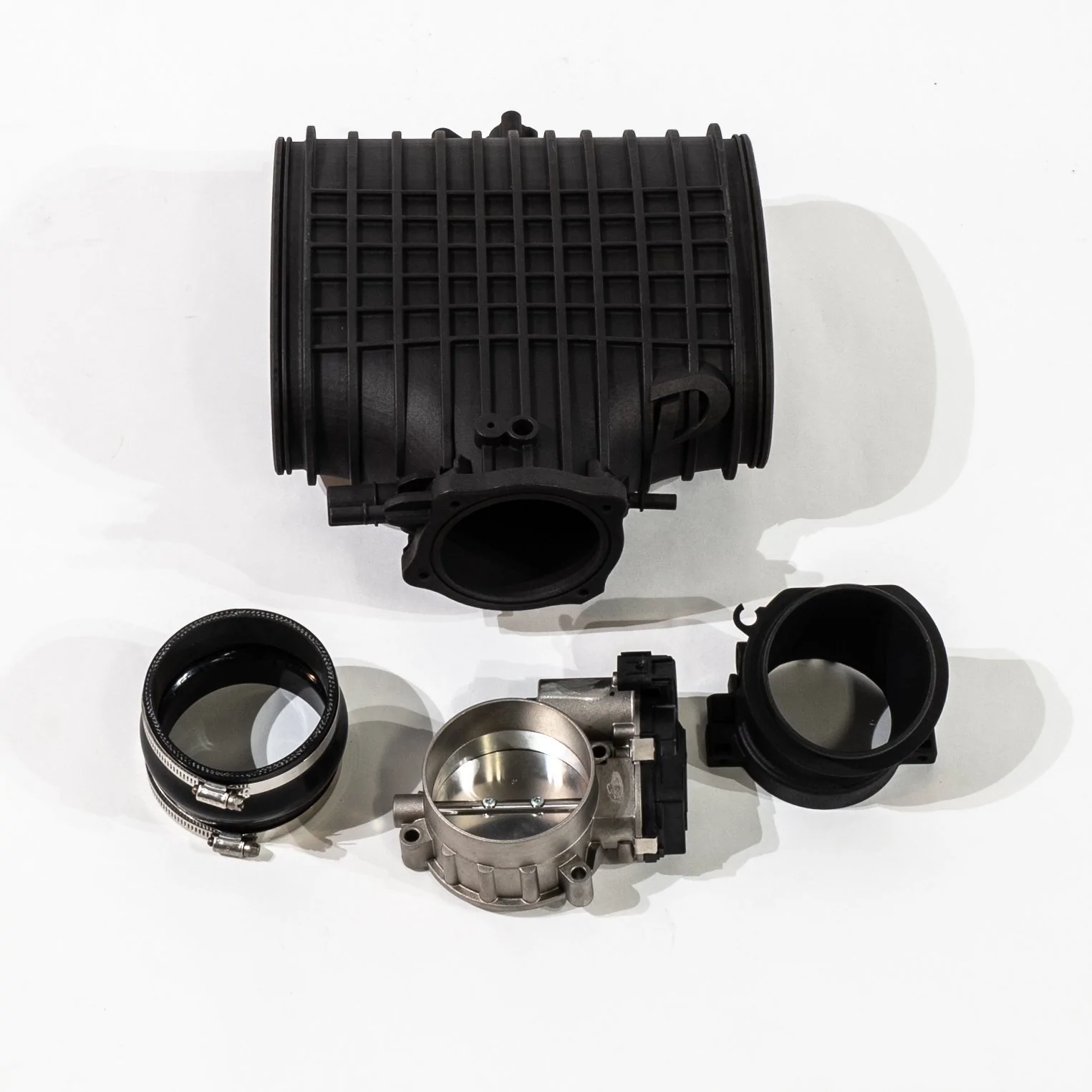How Dundon Motorsports improved part design for Porsche GT Racecars with HP MJF Technology
- cvanhoogevest
- Dec 2, 2022
- 3 min read
Updated: 5 days ago
With the HP Jet Fusion 5200 Series 3D Printing Solution, Dundon Motorsports has been able to accelerate production, experiment with new designs, grow their product portfolio, and expand to new markets.

Dundon Motorsports provides high-performance parts to the motorsports world. One of Dundon's projects was to upgrade the performance and horsepower of Porsche GT racecars. According to Dundon Motorsports’ Jamie Bopp, “The nature of the car has been about freedom, about emotional release, about joy, so Dundon is in the business of taking joyful cars and making them more joyful.”
Challenge
The challenge in this project was to ensure the upgraded parts fit under the hood and within the confines of air conditioner, the power steering pump, and other parts. The other challenge was to ensure the design and manufacturing of the parts was time- and cost-effective.
“Finding an innovative way to make all of these parts fit is one thing,” said Bopp. “The second thing is the business side of the situation. If we were able to injection mold or CNC machine these parts, the costs would be stratospheric.”
Dundon looked into various manufacturing methods to produce an intake manifold, including injection molding and CNC machining. Injection molding would cost nearly $65,000 to produce a mold, which was prohibitively expensive, especially for low-volume manufacturing. CNC machining was not ideal because the tooling is difficult to control in the long, hollow parts due to the long reach of the tool and the vibration on the tool bit. also, aluminum was not ideal to manufacture the part because it transfers heat too easily to the intake air. as an alternative, they looked into 3D printing as a manufacturing option.
Solution
Dundon chose to work with 3D printing as a manufacturing option because the same technology could be used for both prototyping and final production of the parts. After researching the various options, they chose HP Multi Jet Fusion 3D printing technology for its capacity and repeatability. Their material of choice for building the parts is HP Nylon 12, for it's all-purpose robustness and ability to provide an air-tight seal. According to Bopp, “With [HP] MJF, we’re able to not just make a single-printed usable part, but we’re also able to make assemblies that we bolt together to adapt to what we would want to make in the end”.
Result
Dundon now produces many different parts with HP Multi Jet Fusion technology including intake plenums, intake runners, and air filter boxes. With this manufacturing method they are also able to easily alter the designs to improve functionality.
Bopp sees HP 3D Printing as a disruptive technology in the industry. “We can draw a part and, within a few days to a week, have that part in our hands and be testing it on a car, when previously it’s taken development cycles that were quarters, months, at best cases, weeks. If we need to make a change, we can now make that change in days... [HP Multi Jet Fusion] has become an enabler for us. It has enabled us to operate and ‘punch above our weight class’ quite effectively.”
Additive Manufacturing with Tempus 3D
As one of only a select few HP Certified Production Professionals in Canada, Tempus 3D can help you achieve the advantages of additive manufacturing with Multi Jet Fusion. Contact us today to learn more about our on-demand 3D printing service, or get an online quote.
Note: Case study and photos courtesy of HP and Biesse Motorsports.
Read the full HP case study
Learn more about HP Multi Jet Fusion and Nylon PA12
Learn more about HP Multi Jet Fusion additive manufacturing services with Tempus 3D





